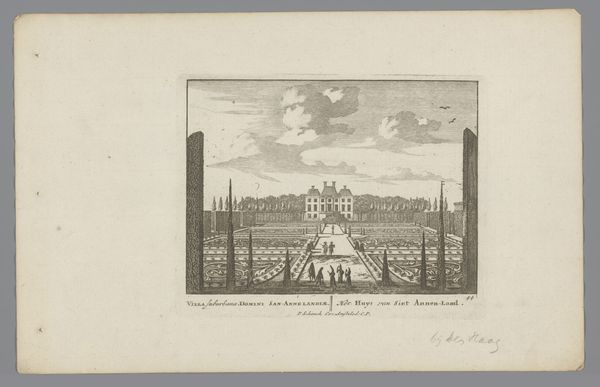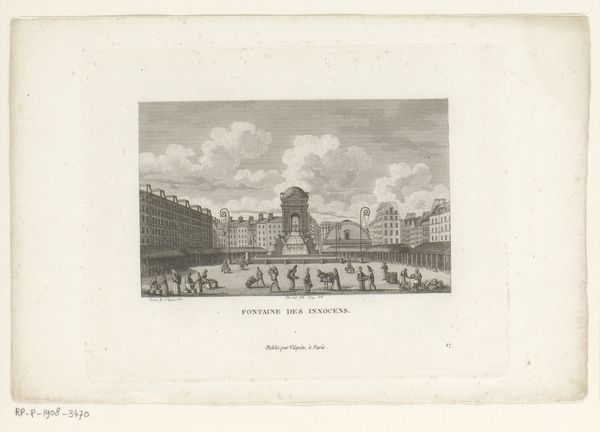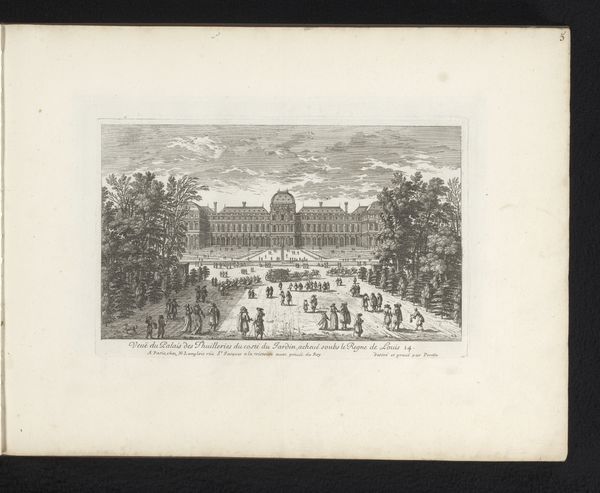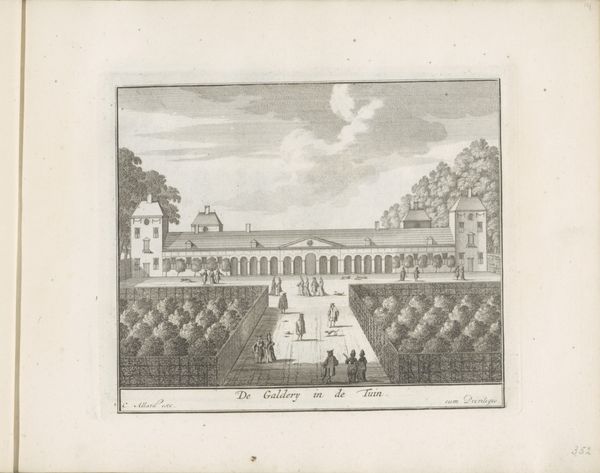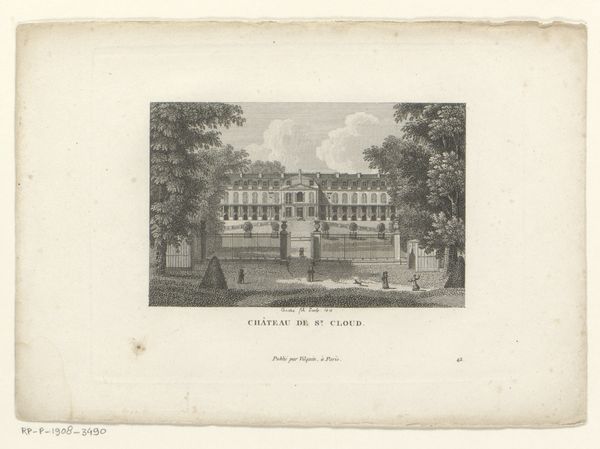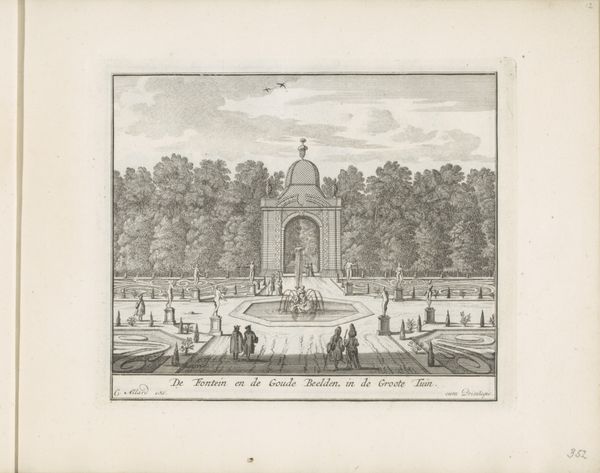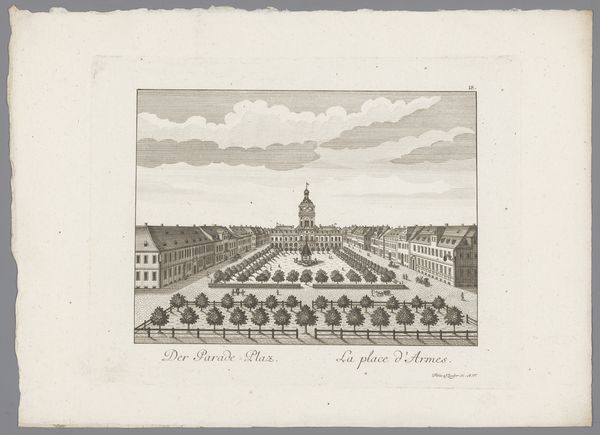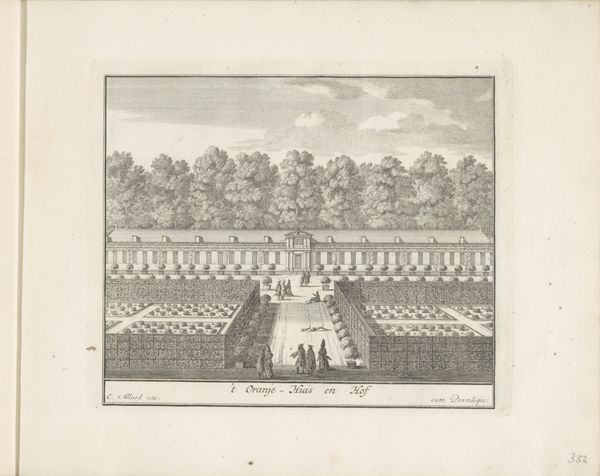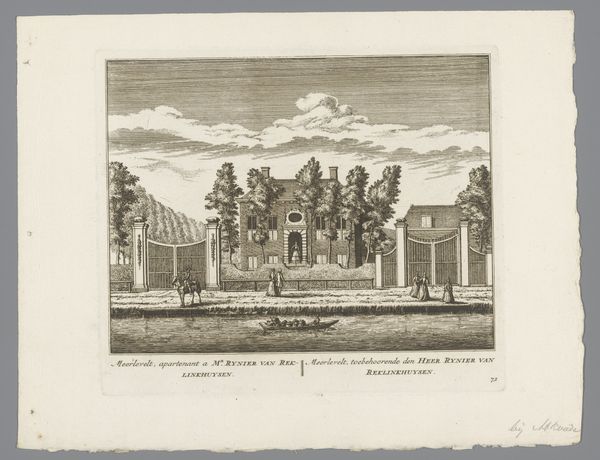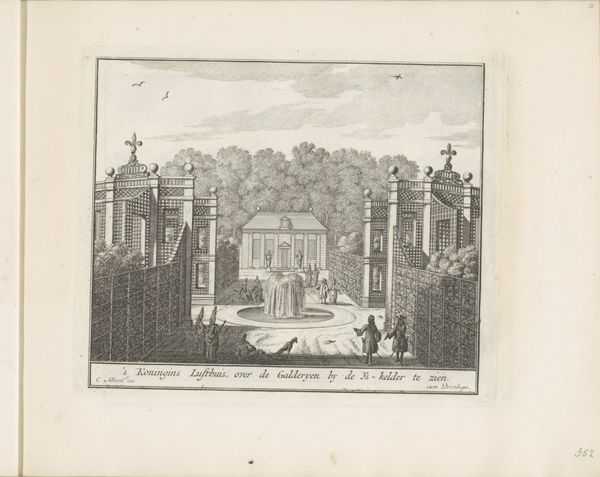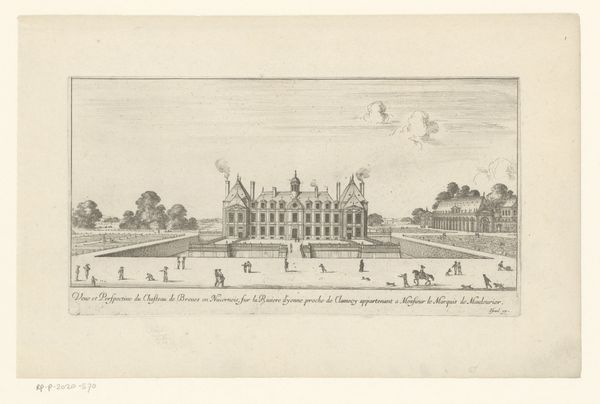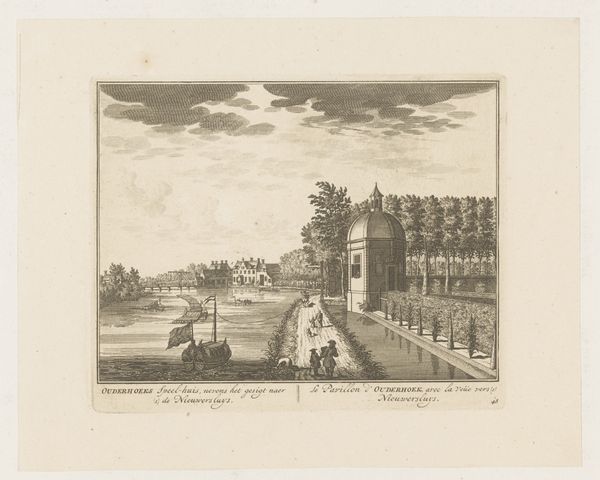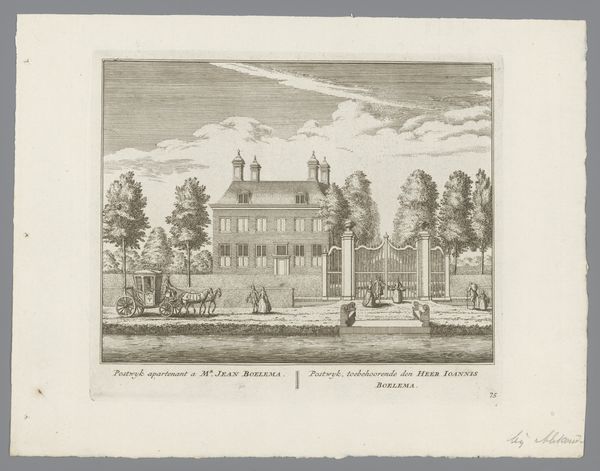
Dimensions: height 215 mm, width 280 mm
Copyright: Rijks Museum: Open Domain
The Klauber brothers made this print of the Heidelberger Gate in Mannheim, Germany using etching. This image presents us with an imposing architectural structure, acting as a barrier and a passage. The gate, flanked by walls and a moat, suggests a city keen on defining its boundaries and controlling access. Consider Mannheim's history: a city rebuilt in the 18th century with a planned grid system, reflecting Enlightenment ideals of order and rationality. The gate, therefore, isn't just a defensive structure; it's a symbol of civic pride and control. The Klauber brothers, as printmakers, were part of a larger network of artists producing images for a growing public, shaping perceptions of cities and regions. How did these images contribute to the construction of identity, both for the city and its inhabitants? As historians, we can delve deeper by exploring maps, city plans, and archival records to understand the gate's function within the urban landscape. Understanding art requires us to consider the social, political, and economic factors that shaped its creation and reception.
Comments
No comments
Be the first to comment and join the conversation on the ultimate creative platform.
